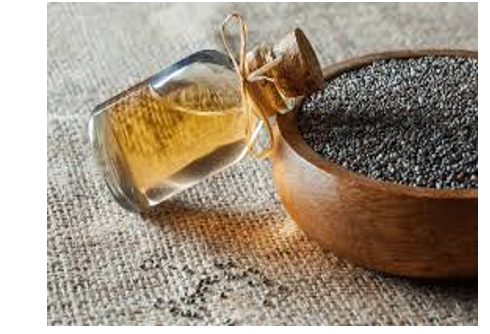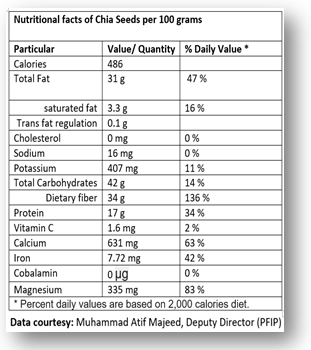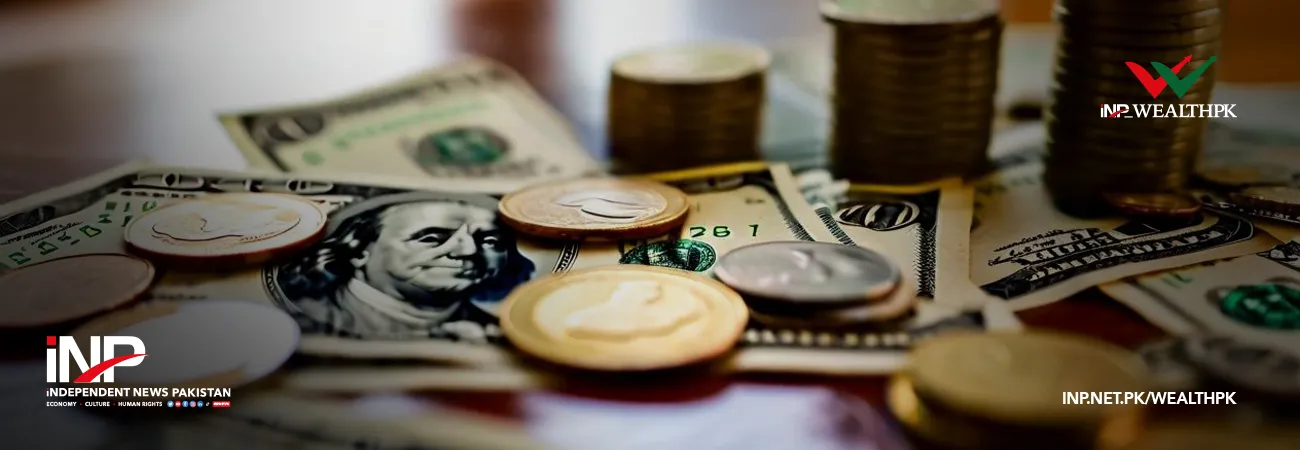INP-WealthPk
Faiza Tehseen

Pakistan can generate a huge revenue from both the national and international markets by promoting unconventional crops like chia seeds, Dr Riffat Tahira, Principal Scientific Officer and program leader of the National Medicinal, Aromatic, and Herbs Program of the Pakistan Agricultural Research Council (PARC), told WealthPK. Chia seeds are rich in protein, high in fibre, potassium, and magnesium, and low in sodium and iron content. Potassium is good for heart patients, while magnesium relaxes muscles by releasing metabolites – uric acid and lactic acid – which cause stiffness. The water footprint of chia crop is low, which is a matter of utmost planetary health and future generations. It also helps restore the soil. “Diversification programs are highly needed in the country to shift toward the high-value crops that also provide environmental safety. Chia is a high-value crop, offering significant earning potential if introduced and cultivated properly.
It is cultivated in August or October. Pakistan has the best environment and season for its cultivation and its plants and seeds are available at the malls, shops and online stores at high rates,” Dr Tahira said. “Chia crop is maintained at the NARC only to get seeds. There is no specific chia crop reading program, but it can be introduced to get a good and high yielding variety. Chia seed oil is a high anti-inflammatory product. The seed coat is too hard. So, it is necessary to soak the seeds overnight for easy digestion. The antinutrients are oxalates, tannins, and phytates, causing stone formation, disturb cell function, and stop iron absorption in the human body. Hence, it should not be used in excessive quantities”. Talking to WealthPK about the cultivation of chia seed as an environment-friendly and valuable crop, Peshawar Muhammad Atif Majeed, Deputy Director of Pakistan Forest Institute, said, “Chia plant is good for earth and beneficial for health. It belongs to the mint family and flourishes in tropical or subtropical climates.

Besides other nutrients, its seeds are rich in omega 3 fatty acids, antioxidants (protect body from damage caused by free radicals), and have an impressive amino acid profile. The seeds are gluten-free, botanically named ‘salvia hispanica’ and called Tukhm-e-Sharbatee in Urdu.” Atif said, “Chia seeds are beneficial in curing/controlling many ailments/disorders, including inflammation, blood sugar, cancer, obesity, week bones, and lack of muscle strength. They can be taken in raw form, soaked in juice, milk or water or can be added to porridge, pudding, smoothies, cereal toppings, yogurt, vegetables, or rice dishes. The recommended consumption is 20 grams (about 1.5 tablespoon) twice a day.” He underscored the need for launching an awareness campaign for promoting chia seed cultivation. The market of chia seed is expected to grow at worth US$3.60 billion at a compound annual growth rate (CAGR) of 13.1% by the year 2031 from US$1.52 billion in 2024. The chia seed oil market is also projected to grow at US$1.76 billion at a CAGR of 16.51% by the year 2031 from US$0.7 billion in 2024. Chia seeds are getting popular as a super food and soil revival plant. Policy-makers should take practical steps for its promotion as a valuable crop.
Credit: INP-WealthPk













